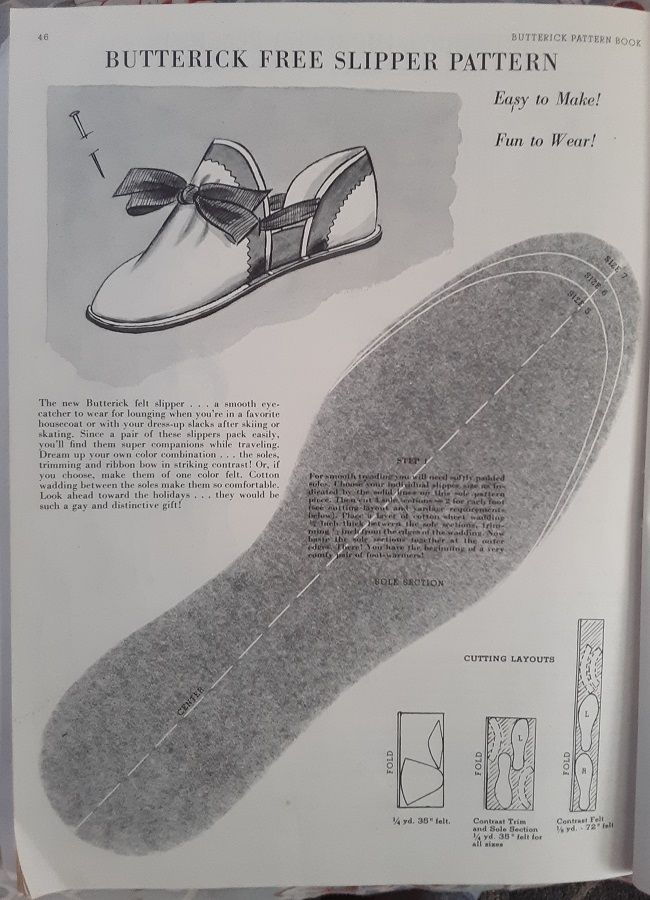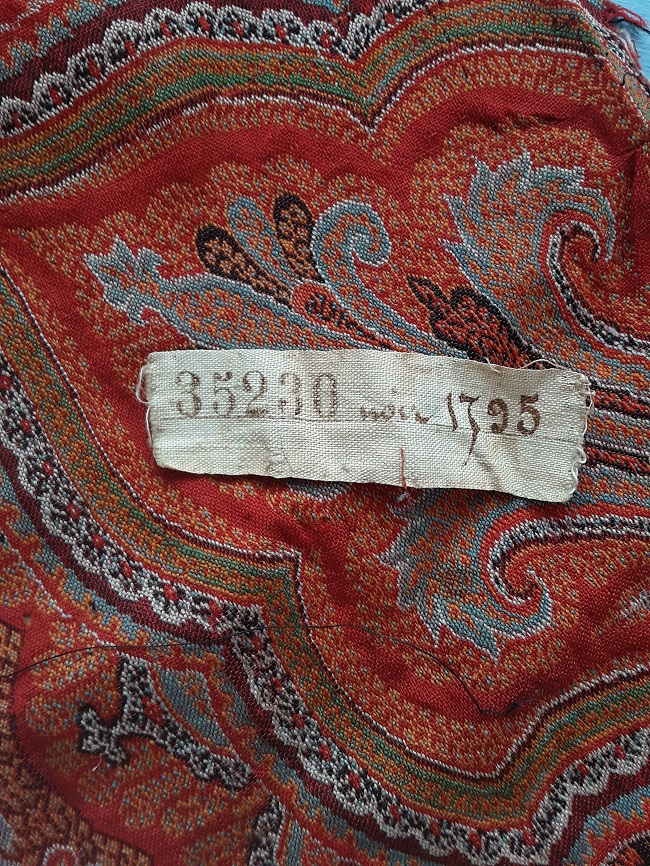
On a recent visit to an antique mall, I acquired three 1940s catalog magazines for the home sewer. In one of them, Fall 1946 Butterick, was a pattern for slippers, designed to be made of felt. We know that WWII ended a year earlier, but supplies of clothing and such was still a bit iffy in the USA, and totally nonexistent in European countries. The world was still in make-it mode. In that spirit, Butterick published a fun and easy pattern to make one’s own slippers.
I thought I had some felt, but it was not to be found. Then, I thought, why not felt some wool for the slippers, but still I had none that I wanted to risk ruining. So plan C emerged when I spotted my stash of antique wool paisley scraps. I had accumulated quite a nice pile of these scraps from flea markets, and quite unbelievably, the Goodwill bins.

It was obvious that I was turning simple felt slippers into a more time and labor intensive project. But, if there is one thing I have at the present, it’s time. So I cut out the pieces and went to work. One thing I can say with certainty, making these from non-raveling felt would be a quick and easy project. But dealing with the paisley meant that all the edges would have to be secured to prevent raveling.

For the upper edges I simply stitched the right sides of the slipper and the lining (also made from paisley) and turned and topstitched. The soles presented more of a problem.

At first I thought I’d blanket stitch all around the sole, but it just looked too messy to me. I ended up hand stitching black twill tape around the edges, securing the uppers to the sole. You can see that in the finished photo at the top of this post. Finishing involved attaching ribbon ties that threaded through buttonholes. With that, the slippers where finished.

The pattern is very straight-forward. There are three pieces – sole, heel, and upper toes. I reinforced with heavy interfacing, and lined each piece before assembling. I also added a layer of cotton batting to the soles.

If you are interesting in trying this project, I have included the pattern pieces, along with a ruler showing the sizing. I wear a size 6 shoe, but I made a toile and discovered that the pattern was oversized. I ended up cutting out the size 5, and even it had to be cut down a bit.




And now, a bit more about the fabric:

Paisley shawls were imported from central Asia into England, France and other European countries starting in the late 18th century. Especially in Victorian times, these were an essential part of a fashionable woman’s wardrobe. Many survive, but many others were cut up to make robes, coats, handbags, and such after they ceased to be fashionable.
One of the pieces I have was cut and sewn into a robe or banyan. While examining it to find pieces for my slippers, I found the above label in one of the sleeves. I posted it on Instagram, because many times the knowledgeable historians there can explain puzzling objects such as this label. No one seemed to know for sure, but after much discussion, I believe it was a label put there by the maker, or more likely, the importer.
Other theories were that it was a museum label, or a cleaning label. I’ve pretty much decided against those two theories, but I’m open to being persuaded. Let me know if you make a pair of these for yourself.



















